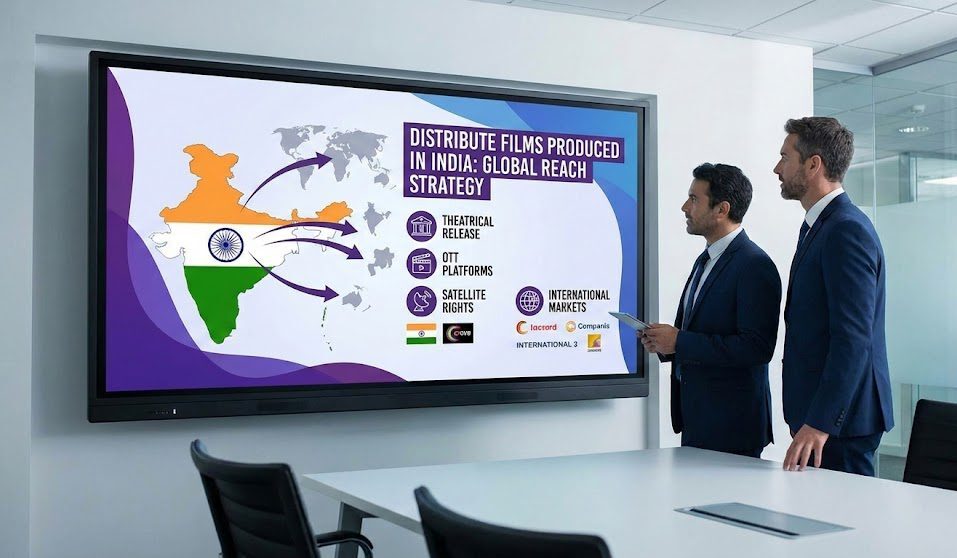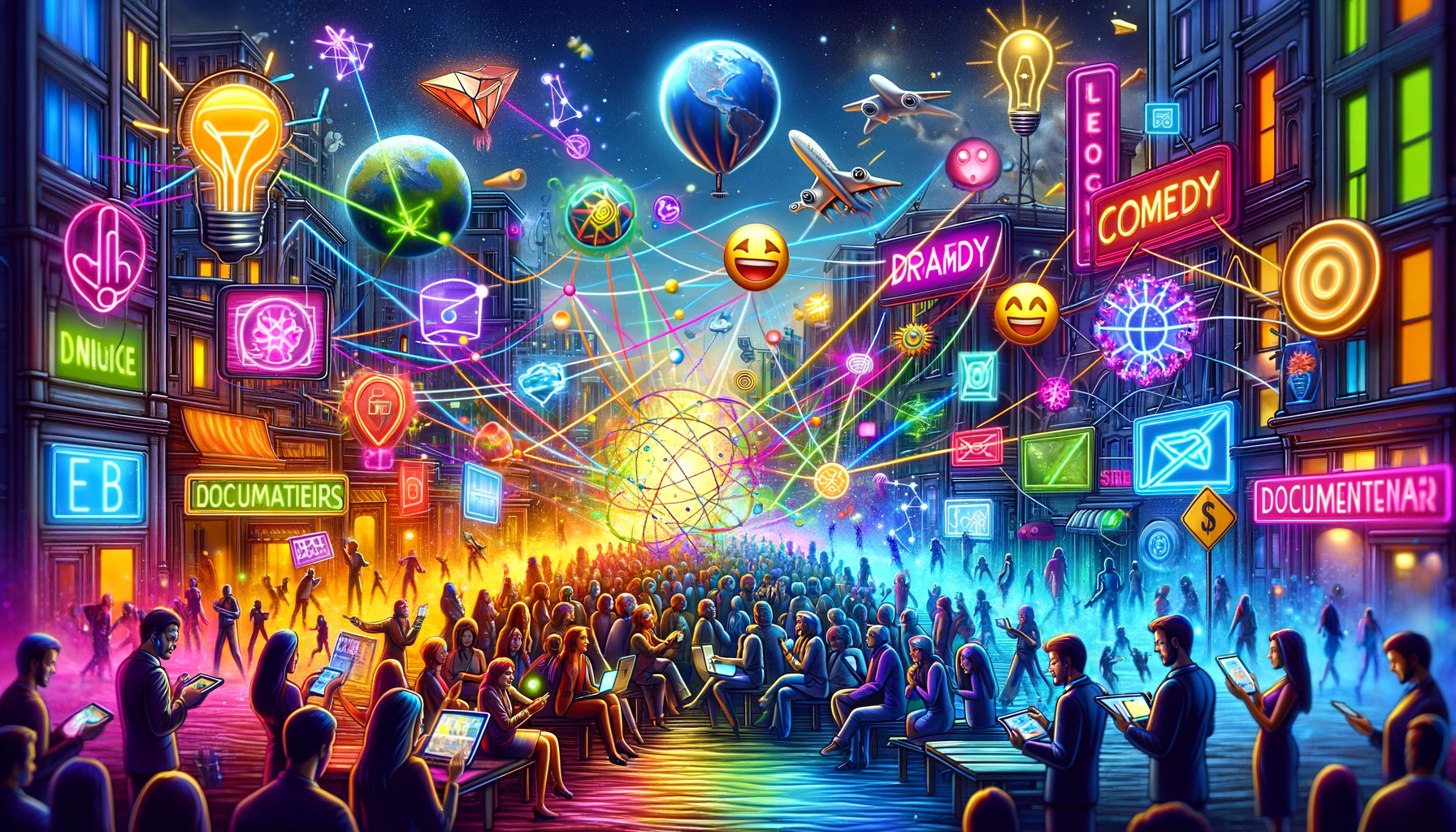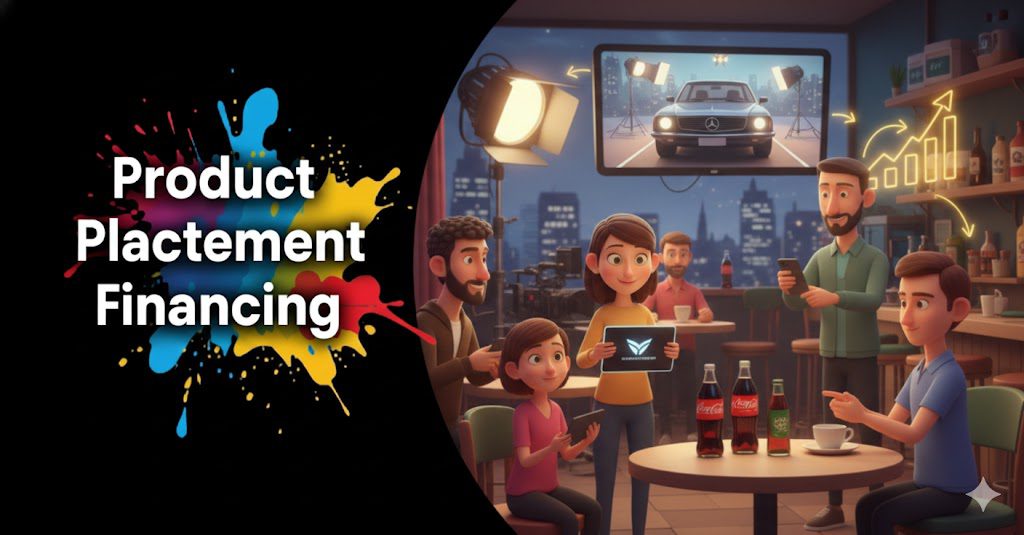Introduction
Film production companies are at the heart of the entertainment industry, shaping how stories are brought to life on screen. Whether it’s a major studio like Disney or an independent powerhouse like A24, these companies are responsible for financing, producing, and distributing films to captivate global audiences.
As technology evolves, so do the challenges and opportunities in the film production landscape. From integrating artificial intelligence (AI) to adopting sustainable practices, companies are redefining workflows to meet rising audience expectations. Platforms like Vitrina.ai are playing a pivotal role in this transformation, offering matchmaking tools, market insights, and operational support to production companies worldwide.
This article explores the trends, challenges, and tools shaping the future of film production while highlighting how companies can leverage solutions like Vitrina.ai for success.
Expand Your Production Network!

1. Understanding Film Production Companies
What are Film Production Companies?
Film production companies create, finance, and manage the process of bringing scripts to life. They range from major studios with extensive resources to independent companies known for their creative storytelling.
Independent vs. Major Studios
- Major Studios: Offer extensive resources, distribution networks, and high budgets (e.g., Warner Bros., Universal Pictures).
- Independent Studios: Focus on creative control and niche markets, producing critically acclaimed films like Moonlight (A24).
Stages of Film Production
- Pre-Production: Script development, casting, and budget planning.
- Production: Filming and on-set activities.
- Post-Production: Editing, visual effects, and sound design. Companies use tools like ShotGrid and DaVinci Resolve to streamline these stages.
2. Trends and Challenges
Key Trends Shaping the Industry
- AI Integration: AI is transforming script analysis, editing, and audience trend predictions.
- Sustainability: Eco-friendly practices like carbon-neutral productions are gaining traction.
- Localization: Adapting films for global audiences is a priority for increasing market reach.
Challenges in Film Production
- Rising Costs: Small studios struggle with escalating budgets.
- Changing Audience Preferences: Demand for diverse and culturally relevant content requires agile production strategies.
- Impact of OTT Platforms: Streaming services like Netflix are reshaping content distribution models.
Post-Strike Recovery Strategies
- Companies are accelerating project timelines and collaborating with global partners to recover from industry disruptions.
3. Tools and Technology in Film Production
Essential Tools for Film Production Companies
- Project Management: Tools like Basecamp and Asana for seamless collaboration.
- Post-Production: AI-powered software like Adobe Premiere Pro for faster editing.
AI in Film Production
AI is enabling:
- Predictive Analytics: Identifying audience preferences early.
- Generative AI: Creating visual effects and enhancing dubbing accuracy.
Sustainability Through Technology
Tools like digital production trackers reduce waste and optimize resource use, aligning with eco-friendly goals.
Streamline Your Production Workflow!

4. Financial and Operational Insights
Cost Considerations for Film Production Companies
Starting a production company involves significant investment in equipment, talent, and marketing. Independent studios often rely on grants or co-production deals to offset costs.
Funding and Scaling
- Grants and Partnerships: Key for indie filmmakers.
- Scaling Challenges: Balancing creative goals with financial sustainability.
Managing Relationships
Building strong relationships with actors, crews, and stakeholders is essential for long-term success.
5. Global Outreach and Localization
Role of Localization
Localization ensures films resonate with diverse audiences through:
- Dubbing: High-quality voiceovers tailored to regional markets.
- Subtitling: Accurate translations for cultural relevance.
Managing Cultural Relevance
Companies like Disney have mastered cultural adaptation, ensuring global success without losing the essence of the original story.
Distribution and Rights Management
Navigating international markets requires expertise in licensing agreements and distribution partnerships.
6. Vitrina.ai’s Role
Matchmaking for Success
Vitrina.ai connects film production companies with distributors, financiers, and vendors. For example, a leading indie studio used Vitrina.ai to secure partnerships in emerging markets, unlocking new revenue streams.
Market Insights for Production Companies
With real-time analytics, Vitrina.ai helps companies:
- Identify buyer preferences.
- Analyze trends in audience demand.
- Plan strategic global expansions.
Enhancing Global Visibility
Vitrina.ai’s vast network simplifies access to underrepresented markets, enabling companies to showcase their work on a global stage.
Conclusion
Film production companies are navigating a transformative era driven by technological advancements, global collaborations, and shifting audience expectations. By embracing tools like Vitrina.ai, these companies can overcome challenges, optimize operations, and expand their reach in a competitive market.
Frequently Asked Questions
Trends like virtual production, sustainable filmmaking, and AI-driven workflows are leading the transformation of the industry.
Budget constraints, distribution challenges, and evolving audience expectations are major hurdles for production companies.
Leveraging tools like Vitrina.ai for vendor insights and data-driven project management solutions can help optimize spending.
Platforms like Vitrina.ai for vendor management, cloud-based collaboration tools, and AI-driven project analytics are vital.
Adopting eco-friendly practices like energy-efficient sets and reducing waste in production are key steps toward sustainable filmmaking.

































